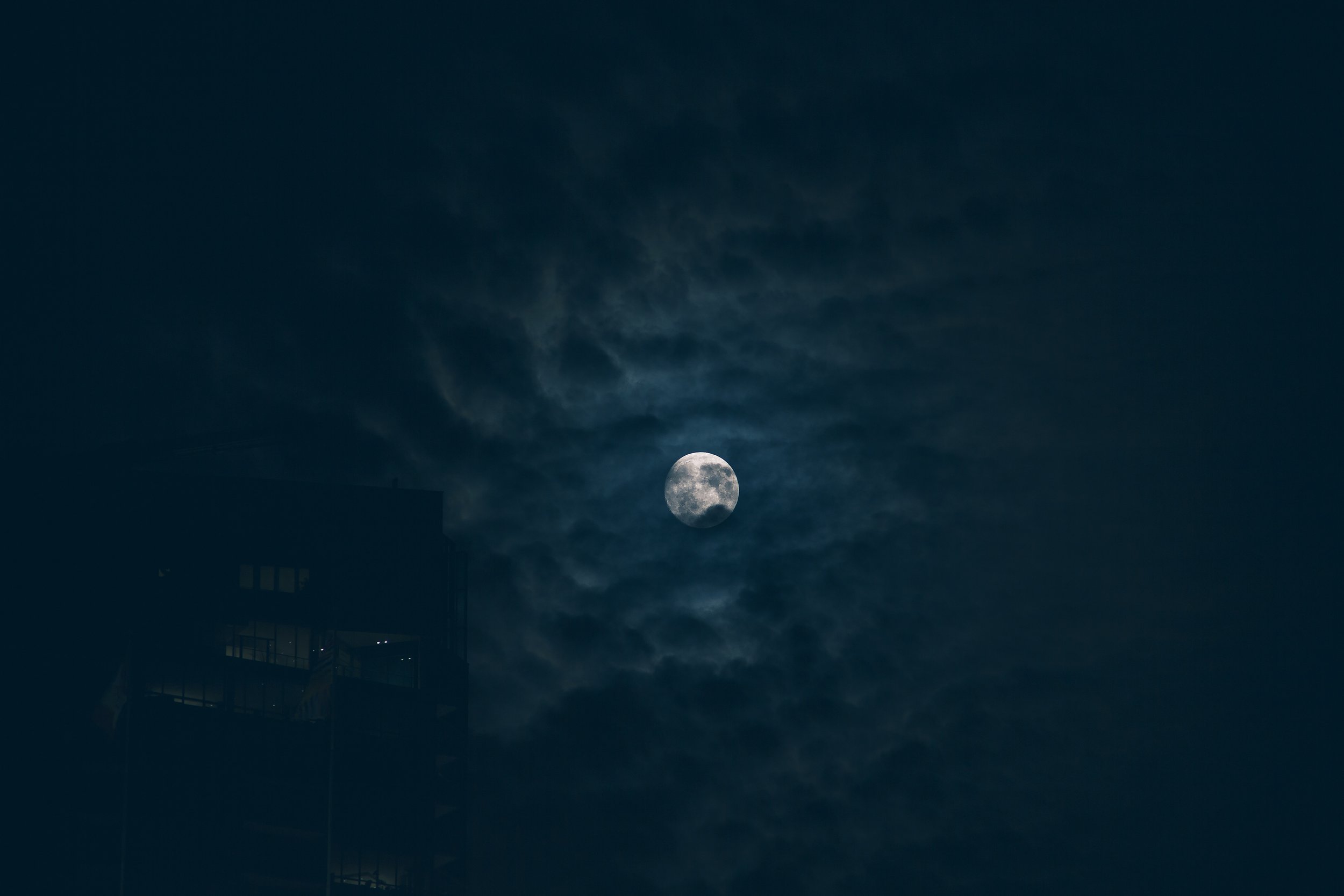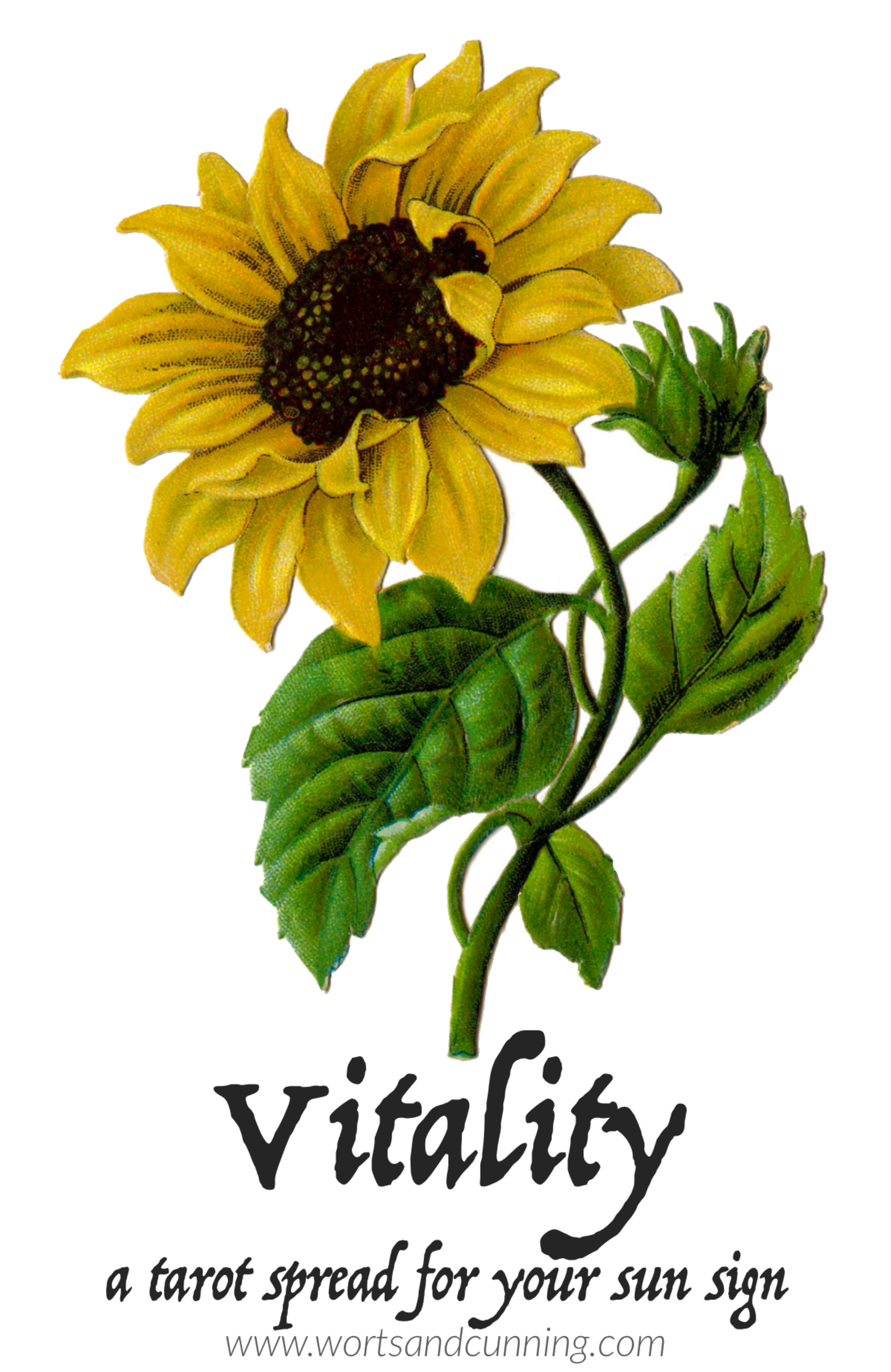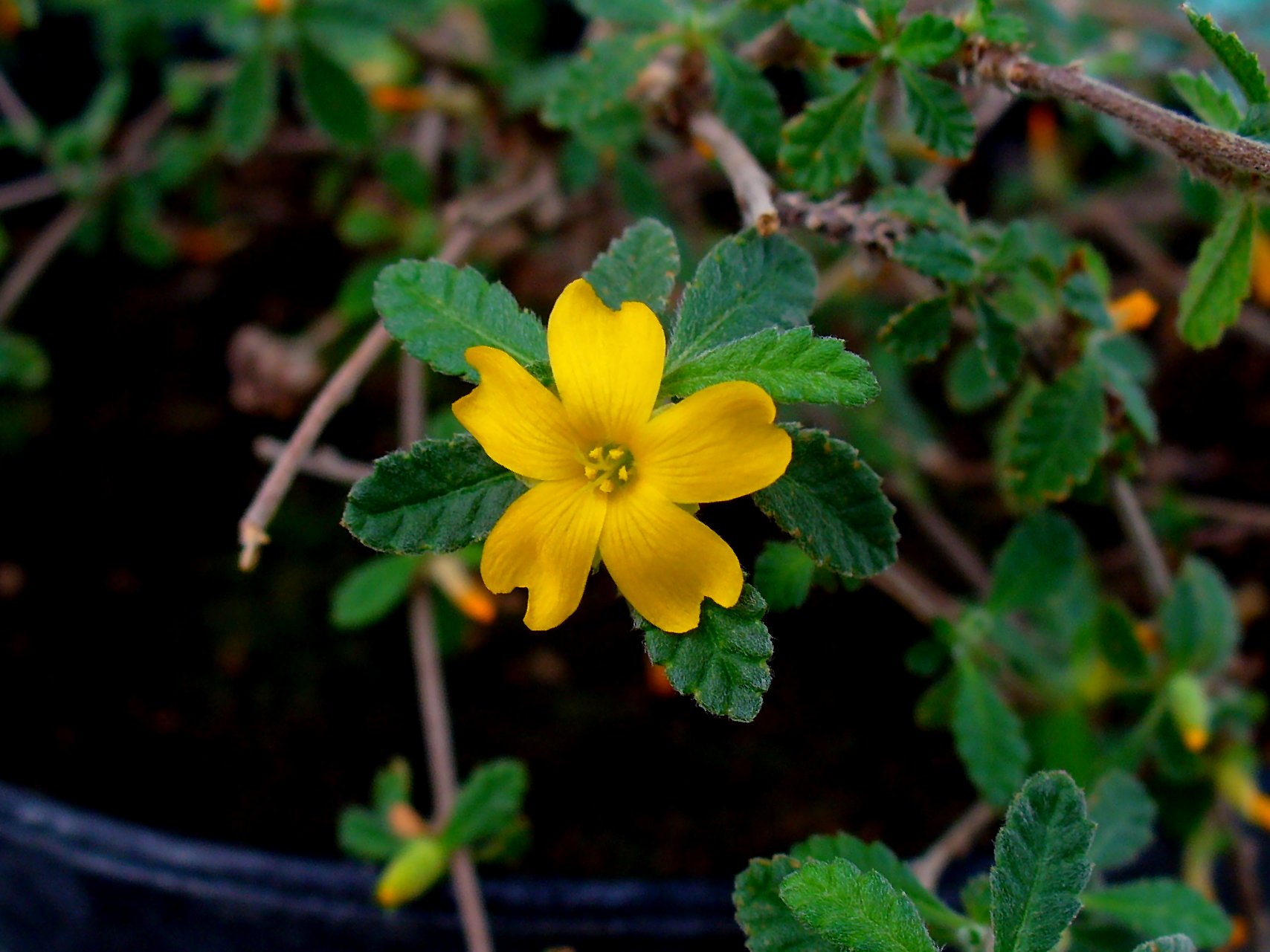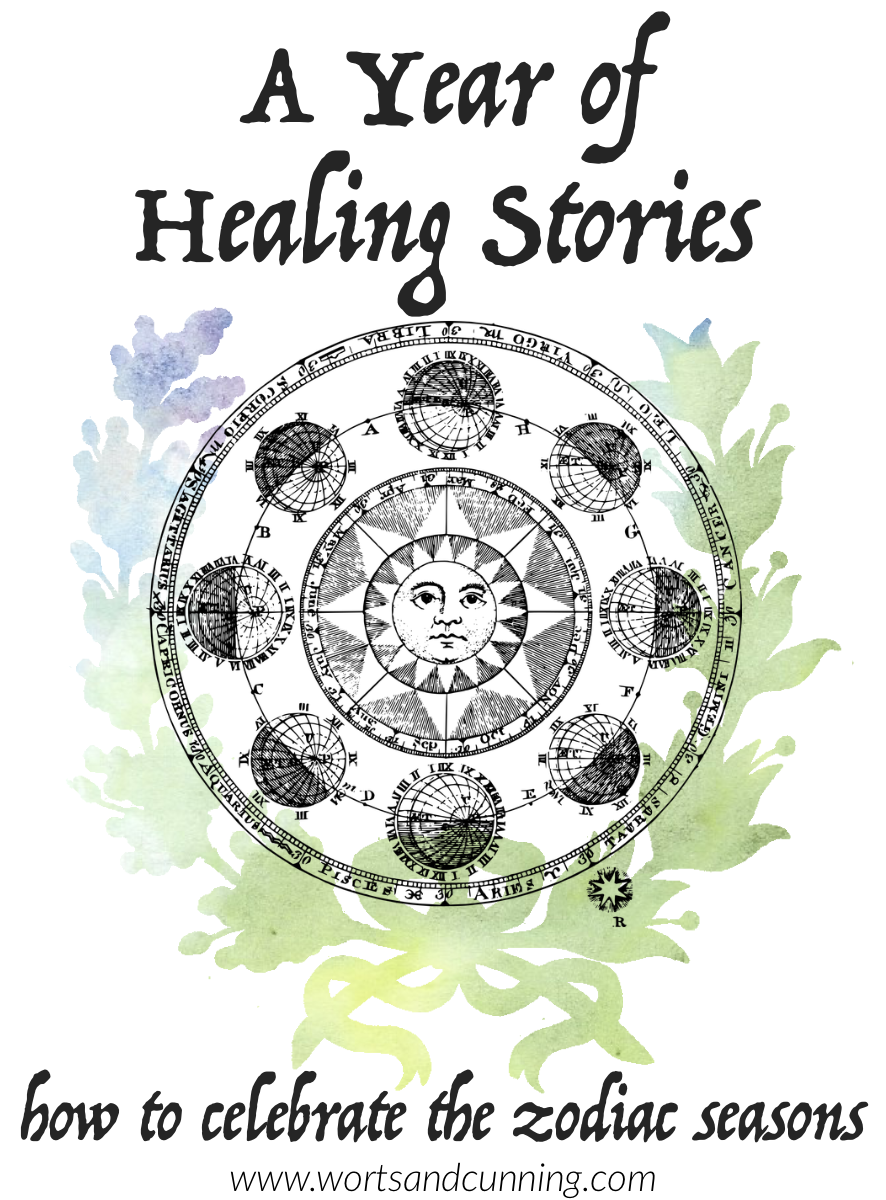A Might-Do List for the Full Moon
Having written a might-do series for the sabbats, I thought it time to make one for the esbats. A "might-do list" is a no-pressure, full of inspiration guide to magickal practice where you are encouraged to do or not do whatever speaks to you for a particular celebration. An esbat is a (typically, though not exclusively) lunar-focused celebration practiced by some magickal folk in some contemporary traditions of Paganism (most notably Wicca) and witchcraft. Sometimes esbat refers to all celebrations of a coven or an individual outside of sabbat rituals. The term "esbat" was adopted into Wicca by the spiritual magpie Gerald Gardner via the work of Margaret Murray who described the esbat as a time for celebration, rites to aid coven members, and times of music, dancing, and "sheer enjoyment."¹ While modern Pagan traditions like Wicca have their own formalized and beautiful rituals and practices for the esbats, I'll be making suggestions for Full Moon celebrations that aren't tied to any specific tradition.
The Full Moon is a time of gathered energy, ripe and ready for magick. During the Full Moon there can be a feeling of abundance and openness in the air, of expansion and possibility. Under the light of the Full Moon we can feel untethered from what is "normal" and expected as the night becomes brightly illuminated - not quite day, but not quite the feeling of night either, marking a space between the known and unknown.
How we mark time - by fixed calendar, lunar calendar, seasonal changes, personal rhythms, and so on - can create or contract space for the type of healing work and magickal practice we hope to experience, which is why time is such an interesting thing to explore in our lives. When I talk about magickal practice to my students, I always encourage them to begin observing lunar cycles as a way to not only connect back to ancestral rhythms of measuring time, but to begin to connect with time in a way that feels supportive of magickal practice - something cyclical, open to change, and able to hold space for all of our complexities.
So if you're curious about developing a Full Moon practice, here's a list of nine things you might-do for your esbat celebrations.
Reorient Your Compass
The Full Moon creates an opportunity for us to pause and reorient. Our lives are busy and filled with all sorts of decisions that need to be made, things that need to be done, and tasks to be tackled. It is easy to forget where we are and where we want to be living our life from. With Her bright light illuminating hidden spaces, the Full Moon is a wonderful time to reconnect to our inner compass of values and visions, of healing and lineage, of purpose and dreaming, so we can feel more connected to our centered self as another lunar cycle unfolds before us. This can be done in all sorts of ways through ritual and actions of care, but one simple ritual is to write down your values and guiding principles in a way that feels simple enough to recite and empowering to say. An example might be:
I am, {Name},
I call in beauty and mirth,
compassion and patience,
kindness and wonder,
that I may be in right relationship
with my beloved community
the land I live with
and the vision of a vibrant, joyful planet
I also think singing simple chants are a beautiful way to realign energy and help us to center ourselves in our values. Let's say you're a peace activist and abolitionist - maybe you sing the Circle Chant by Linda Hirschhorn, which was originally written in support of the 1982 janitor's strike of UA movie theaters, and sings of circling for freedom and peace.² A song like the Circle Chant, or anything from the song collective Beautiful Chorus, or the vast archive of old and modern Pagan chants, can be an easy, joyful way to feel strengthened in our purpose and calling.
Gather Energy
Under the Full Moon, energy is pulled up from deep in the earth, gathering in swirling pools and rushing lines across the land. It is a time when we can walk the land and call that energy into ourselves or summon the light of the Moon wherever we might be on a Full Moon night. It is also traditional to leave items that we want to be charged up under the light of the Full Moon, including tools of divination, stones, and jewelry, being sure to bring them back inside before the Sun rises.
Connect With the Cosmic Coven
While I'm using the word "coven" I am really referring to the form of community that you are most called to connect with. As a young witch who had limited access to the greater Pagan community, the idea that at every Full Moon there were other witch folk and Pagans creating magick under Her light was completely enchanting and filled me with a sense of belonging as I sat at my bedroom altar. Working with the cycles of the Moon is not just a personal preference for me and an act of liberation from static solar, patriarchal measurements of time, but a way to connect to ancestral traditions, living communities of the present, and helping to make a path of Moon magick for generations to come. If you have a working magickal group, but are practicing solo for the Full Moon, it can be lovely to coordinate rituals or keep an item on an altar that connects you to the rest of your circle. But if you're still seeking a group or don't have an interest in group practice but want to feel connected to the wider magickal community, you might take a moment to visualize and breathe into the web of community that runs through us all. If you're looking for further inspiration, a few years ago I wrote about how every Full Moon you have a coven.
You may have noticed that I've been emphasizing connecting with people, as opposed to land or spirits or divinities, because I think that making time to call in and be called to community that feels good and nourishing to you is an important regular practice. We live in times where the spell of fracturedness is run amok and we feel more separated and lonely than ever. Creating a monthly practice focused on cultivating community with other people is one that I think we need more than ever and calling in community under the light of the Full Moon is an especially magickal way of helping to do that.
Develop Your Psychic Gifts
With the energy stirred up under the Full Moon, why not channel that into the development of your psychic gifts? I think a playful approach to getting in touch with our intuition is particularly appropriate for Full Moon celebrations and even better with friends. There are all sorts of ways to develop your psychic gifts, but I wrote about how you can use a tarot deck to help you out. You can also work with plant allies like Motherwort (Leonurus cardiaca), Lemon Balm (Melissa officinalis), and Sage (Salvia officinalis) to help support your psychic energy.
Dream Magick
Speaking of developing psychic gifts, performing dream magick at the time of the Full Moon is particularly auspicious. Here is where you can have fun seeking out traditional and modern dream rituals and spellwork, but a very simple ritual is to call in a dream for a situation you're seeking insight on. Using a stone or plant bundle as a point to anchor your magick, hold it under the Full Moon light while chanting:
Full Moon, O Full Moon
Send me a dream
Illuminate for me
What remains unseen
Visualize the situation you are seeking insight on as you draw the light of the Full Moon down into your magickal item. Keep your item beside or under your bed to help pull the dream towards you sometime over the next few nights. While you might not remember the dream, you may wake up with a sudden knowing or experience a flash of insight over the next few days to help you with your quandary.
A general tip for all kinds of dreamwork: while there are culturally specific traditions for calling in dreams, I find that performing a dream spell in a dreamlike way can be helpful. So wear that piece of dreamy clothing while dancing around a circle of chalk marked onto the earth, your stone held aloft in the Full Moon light, candles burning, familiars purring…
Connect with the Elements
Within western esoteric tradition, each Full Moon is charged by the energy of one of the four elements of earth, air, fire or water. If you do any sort of elemental-based work in your practice, the Full Moon can be a time to immerse yourself in the elemental energy. A Water Full Moon might be a time to do a lunar bath, dream work, and water-based remedies for the cycle ahead while a Fire Full Moon might be spent before an altar full of candles, working fire magick, and dancing up energy. The element of each Full Moon is determined by the sign it is in:
Earth Moons happen when the Moon is in Taurus, Virgo, or Capricorn.
Air Moons happen when the Moon is in Gemini, Libra, or Aquarius.
Fire Moons happen when the Moon is in Aries, Leo, or Sagittarius.
Water Moons happen when the Moon is in Cancer, Scorpio, or Pisces.
The four elements are central to the traditional western herbalism philosophy of healing and if you're curious you can learn more about that here.
Make Moon Water
I've found that making Moon water is an activity that many a new-to-magick practitioner performs early on in their practice - which makes a lot of sense! It's an accessible, inexpensive, and powerfully simple way of connecting with lunar energy that leaves you with a tangible object that you can use after a night of Full Moon festivities. Setting out a bowl of water under the Full Moon light, maybe with herbs and stones added or a silver coin, feels like an old sort of magick. Moon water is versatile - you can use it in lunar baths and in spellwork, for watering plants, cleaning and blessing your home, and on and on. Some witchfolk even make their flower essences under the light of the Full Moon, carrying the magick of Moon and herb with them in tiny bottles of enchantment to use whenever they need extra emotional support.
Learn or Create Your Own Full Moon Chant
One aspect of modern Pagan culture that I love is the preservation and sharing of knowledge through simple chants, sung or spoken. There are circle-casting chants, chants for healing, chants to raise and banish energy, chants to celebrate rites of passage, and chants to pass on wisdom teachings. There are plenty of Full Moon chants and songs out there - Libana's Full Moonlight Dance is a classic, sung by Full Moon circles around the world, but there are plenty more. You can also draw from your own cultural traditions for lunar chants or create your own. When sung or spoken under a Full Moon month after month, a chant has the power to help us move into a state of reverence and flow, of creativity and magick, with little effort.
Zone Out
While this post is about things you might-do to celebrate a Full Moon esbat, you also don't need to do anything. It is an act of rebellious magick within the overculture of over-productivity and burnout to choose a nonproductive state of being and to bathe in the waters of un-busyness. If you are able to lie down under the light of the Full Moon with no plan in place, just presence in mind, that is a ritual of zoning out of the normal modes of consciousness and tuning into something else. What that something else is is for you to discover.
🌕
If you're looking for more inspiration, how about a Full Moon tarot spread and healing ritual for your esbat celebrating? You can also find the rest of my might-do lists for the lunar esbats below:
I also have a collection of over 120 lunar-centered rituals and recipes - The Moonfolk Book of Shadows - that you can access for free as a member of my newsletter community.
Friends, I hope that wherever and however you gather 'neath the Full Moon's light that you are held by the dreams of a thousand generations of magick-makers holding fast the circle of love and possibility.
This post was made possible through patron support.
❤︎ Thanks, friends. ❤︎
📚
Footnotes
1. Margaret Murray, Witch Cult in Western Europe: A Study in Anthropology (Oxford: Oxford Press 1921), 113.
2. Organizations like Rise Up & Sing are excellent resources for finding inspirational chants and songs.






















